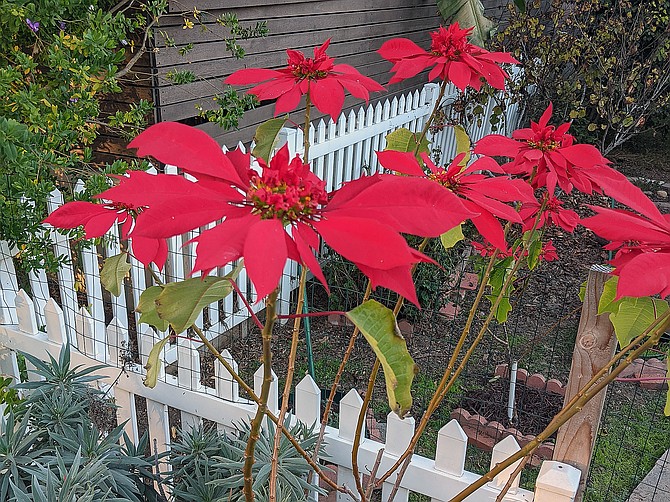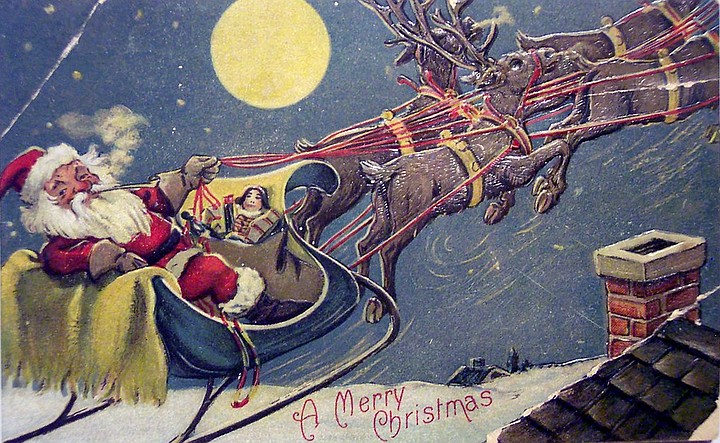 Facebook
Facebook
 X
X
 Instagram
Instagram
 TikTok
TikTok
 Youtube
Youtube

Poinsettias, a favorite of backyard gardeners, are now exhibiting their scarlet, petal-like bracts, just in time for the holidays. The onset of 14-hour-long nights triggers their scarlet behavior: In San Diego this condition is met just before the date of winter solstice — Thursday, December 21.
Winter Solstice, the moment when the sun reaches its southernmost point on the celestial sphere, occurs this year at 4:04 am, Sunday, December 21. This event signals the beginning of winter in the Northern Hemisphere and the beginning of summer in the Southern Hemisphere. With only about ten hours of daylight, San Diego must endure its darkest and gloomiest nights this week and next. During the day, the sun takes its lowest arc in the sky, struggling to an altitude of only 34 degrees (as seen from San Diego), then quickly sinks toward the horizon. Conversely, it’s the longest night, and the Moon takes its highest path along the sky and is above the horizon longer than any moon.

Not only is the December 26th full moon the first full moon of the Winter Solstice, it is also a Christmas Moon. It will rise around sunset and appear full to the naked eye on December 25, 26, and 27. A Christmas Full Moon happens on average every 19 years. It happened in 2015, and will happen next in 2034. The image of Santa’s sleigh and reindeer flying across the night sky, backlit by a full moon, is common on Christmas cards and holiday advertisements.


Poinsettias, a favorite of backyard gardeners, are now exhibiting their scarlet, petal-like bracts, just in time for the holidays. The onset of 14-hour-long nights triggers their scarlet behavior: In San Diego this condition is met just before the date of winter solstice — Thursday, December 21.
Winter Solstice, the moment when the sun reaches its southernmost point on the celestial sphere, occurs this year at 4:04 am, Sunday, December 21. This event signals the beginning of winter in the Northern Hemisphere and the beginning of summer in the Southern Hemisphere. With only about ten hours of daylight, San Diego must endure its darkest and gloomiest nights this week and next. During the day, the sun takes its lowest arc in the sky, struggling to an altitude of only 34 degrees (as seen from San Diego), then quickly sinks toward the horizon. Conversely, it’s the longest night, and the Moon takes its highest path along the sky and is above the horizon longer than any moon.

Not only is the December 26th full moon the first full moon of the Winter Solstice, it is also a Christmas Moon. It will rise around sunset and appear full to the naked eye on December 25, 26, and 27. A Christmas Full Moon happens on average every 19 years. It happened in 2015, and will happen next in 2034. The image of Santa’s sleigh and reindeer flying across the night sky, backlit by a full moon, is common on Christmas cards and holiday advertisements.
Comments